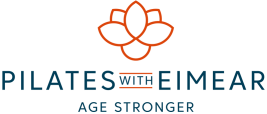Whether you are starting your pilates journey or if it’s an ongoing thing (wonderful!!), it’s good to go back to basics. Here are some of my best tips for anyone doing group pilates mat classes.
All about the deep abdominals Getting in touch with the deep abdominals – especially the transversus abdominus – is the most important. This is fired up when you gently contract and lift your pelvic floor muscle. Use every breath out (‘exxxxxhale’) as an opportunity to lift up though the pelvic floor and engage your low abs, pulling in towards your spine. (Think about pulling in low belly as if you were getting into a pair of too-tight jeans!). Use every inhale as a opportunity to create length, space and girth in the upper torso.
Expecting too much too soon The best change happens slowly, especially when it comes to bodies. Pilates teaches you to change movement patterns that may be embedded in your muscle memory for years. It takes a while to take the pilates way of thinking on board, so DO NOT BE SELF-CRITICAL if you cannot do it all perfectly in the beginning. Do not compare yourself with your neighbour. Work with what you have and to see change within yourself over time. Have a sense of humour!
Slow and with control Doing things slowly and with control yields more results than rushing the moves. The Pilates method was originally named Contrology (the study of control) to emphasise this concept. Slower pace means you’re turning on deep stabilising muscles and you’re creating more isometric contractions. Pilates is not a race nor a competition. Good form is more important than the number of repeitions. Try to sense the particular muscles that I mention during class.
Necks get compromised, over-flexed or over-extended The head should always be sitting at the top of the cervical spine with the normal cervical extension. A series of abdominal exercises takes place in a typical mat class with the head held off the floor unsupported, as in Ab Prep, Hundreds or Single Leg Stretch. In these challenging moves, it’s common either to jam the chin down to the chest (leading with the head and over-flexing) or to stare at the ceiling with the chin jutting upwards (over extending).
When lifting head off the mat, the chin should be a little closer to the chest than usual (slight head nod or ‘cranial vertebral flexion’) as if you’re gently holding a ripe peach between these two body parts. This head and neck position also helps to round the upper spine. The head nod precedes the lift of the shoulders off the floor. When lifting your head and shoulders, feel like something is pulling your chest towards your knees. Eye line goes to your knees.
NOTE: The correct position can be very challenging if a) you have existing neck or shoulder problems, b) you are carrying a baby/toddler around a lot or c) you have weakened neck extensors (happens as we age!). Avoid neck tension in pilates class at all costs! A very valid option is to keep the head and shoulders down on mat. Or to support the head with your hands and really focus on the chest lift!
Watch out for neutral or ‘imprinted’ pelvis In pilates exercises when both legs are off the mat, you may be asked to round your low back (to ‘imprint’) and gently make your lumbar vertebrae contact the mat (‘lose the lumbar curve’). If you are unable to stabilise in neutral, ‘imprinting’ protects your lower back when carrying the load of your legs. However, rather than jamming your vertebrae to the mat, engage your abs at the front body to slightly flatten your lower back. (NOTE: if injured or very weak in abs, you would not be lifting both legs at one time.)
Shoulders rise up and the neck gets tense Your shoulders should be anchored down your back. It’s human to engage the neck muscles and take the shoulders up towards your ears. Hunched shoulders create undue tension in the neck and upper body. Focus on the shoulder blades sliding down your back, giving you an elegant swanlike neck. Think of your head like a helium balloon and of your shoulders melting down your back.
Not just while on the mat Take the sensations, body awareness and posture cues you get in your class with you into your week. Lessons learned on the mat can help you walk, hike, bike and run better; they will also help you avoid back pain on long car trips and neck pain from spending too much time sitting at a computer.

